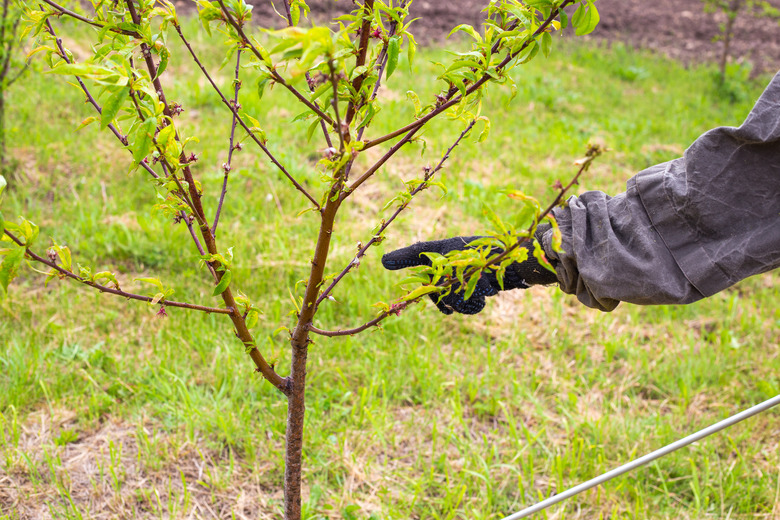Homemade Fungicide For My Outdoor Trees
We may receive a commission on purchases made from links.
Trees are susceptible to a variety of different pathogens like blight, rust, scab, leaf spot, black spot, and mildews. When the trees are already stressed, they are most vulnerable to pathogens, so keeping them happy and healthy is very important.
Fungal spores spread easily from splashing water and can travel on insects, animals, and garden debris. But it's possible to stop the disease from spreading and, in some cases, prevent the disease from occurring, with fungicides.
Fungi That Attack Trees
Fungi That Attack Trees
Before you jump into making fungicides at home, you should learn something about fungi. That's because fungi are far and away the most important pathogens of trees. To understand the diseases and how they spread, it is essential to first get an overview of the fungi themselves.
There are some 80,000 known species of organisms belonging to the kingdom Fungi. These include yeasts, rusts, smuts, molds, mushrooms, and mildews. These organisms were once classified as plants, but it was soon discovered that fungi have neither chlorophyll nor the organized plant structures of stems, roots, and leaves.
The soil provides an ideal habitat for many fungi species. But fungi can also live in the air and water, and on plants.
How Fungicides Work
How Fungicides Work
Fungicides are pesticides that impede the growth of fungi on plants. Some prevent their growth, others kill the fungi, while others mitigate their growth on plants. Note that they are not effective against bacteria, nematodes, or viral diseases.
Fungicides are either contact fungicides or mobile. Contact fungicides are not absorbed by the plant, but form a protective barrier that prevents the fungus from entering and damaging plant tissues. Mobile products are absorbed by and move through the plant. Some prevent the fungus from getting into a plant, while other deter the fungus after it infects the plant.
Always keep in mind that the best management strategy against fungal diseases in trees is to give your trees the best possible cultural care. That includes providing ideal soil, water, and light conditions. When the tree is well established in its site, remember to keep the area clean, fertilize appropriately, and, if necessary, use an integrated pest management approach that uses nontoxic methods first.
Types of Homemade Fungicides
Types of Homemade Fungicides
While many commercial fungicides can contain toxic chemicals, fungicides you make at home generally do not. Note that homemade fungicides will not be as powerful as the chemical products available in stores.
One simple homemade fungicide can be made from baking soda and liquid soap. This is reputed to work for blackspot and powdery mildew, among other fungal diseases. Blend up 1 tablespoon baking soda, a squirt of liquid dish soap, and a gallon of water. Apply as soon as you see the first signs of disease. Don't apply in the sun.
Or make a fungicide using apple cider vinegar. Diluted with water — 2 tablespoons vinegar to a gallon of water — it can be used to control black spot. Don't spray leaves during hot weather.
Tip
Test spray your homemade fungicide on a few leaves and wait 24 to 48 hours before spraying the entire plant to be sure no damage occurs.
